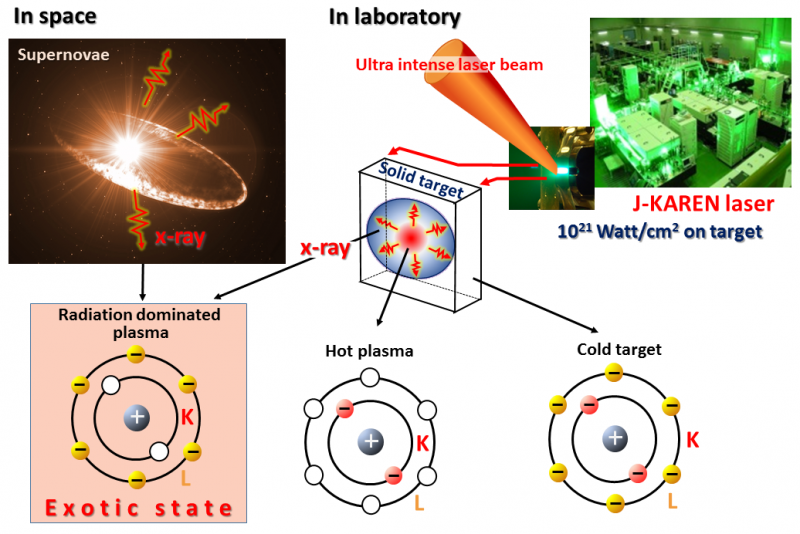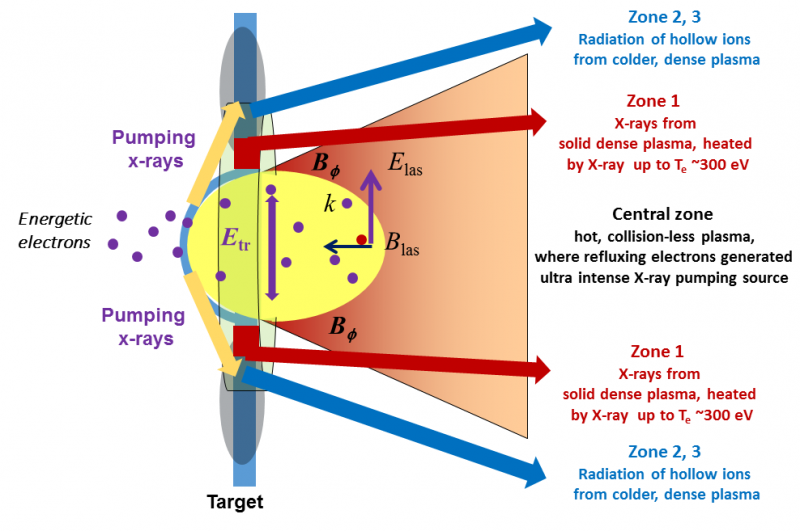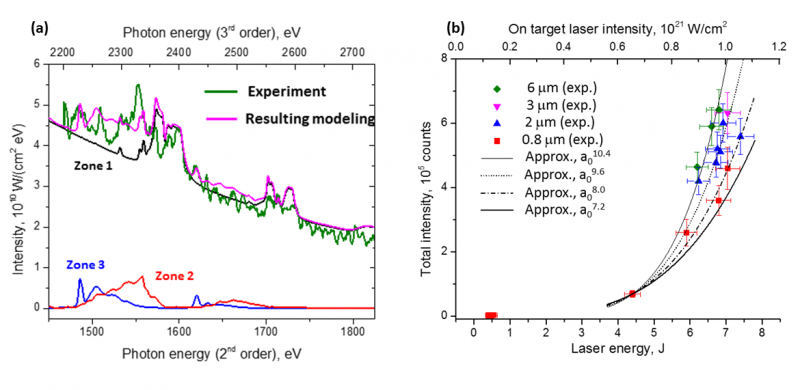Generation of exotic states – Hollow multicharged ions by ultraintense X-ray photo pumping in space (Supernova explosions) and laboratory (ultra-intense visible femtosecond lasers). (Upper right) A photo of J-KAREN, KPSI and JAEA’s high power laser facility. Credit: Osaka University
A research group from Osaka University, in collaboration with an international research team, successfully realized in laboratory the world of exotic atoms under extreme state through high - brightness X-ray sources, typically realized in supernova explosions. A world first research produced highly unusual plasma composed of hollow atoms by utilizing the Japan Atomic Energy Agency (JAEA) Kansai Advanced Relativistic Engineering Laser (J-KAREN), one of the world's most powerful compact femtosecond laser facility.
For this research, Anatoly FAENOV of the Division of Photon Science and Technology of the Institute for Academic Initiatives and Mamiko NISHIUCHI of the JAEA's Quantum Beam Science Center, along with an international collaborative research team, performed an experiment to demonstrate that it is possible to remove the two most deeply bound electrons from atoms, emptying the inner most quantum shell and leading to a distinctive plasma state through the generation of ultra-bright x-rays (See Fig.1). The irradiation of an incredibly powerful high contrast J-KAREN laser beam to a solid matter allowed successfully to attain X-rays with a radiative temperature of 15,000,000°, and a plasma state of 3,000,000° (Fig.2). In addition, it was discovered that multiple inner-shell electron excitations were generated, causing an explosive increase in the number of intense X-rays (Fig.3).
Through the results of this research it was shown that atoms can be empty from the inside out by ultra-intense visible lasers. The behavior of produced exotic atoms in an extreme state has come to light, which can provide a clue for understanding extreme states occurring in outer space, such as those in supernova explosions. Moreover, through the understanding that the generation efficiency of x-rays explosively increases in proportion with the power of the laser beam, this opens doors for the utilization of x-rays with the unprecedented intensities reached by the world's compact femtosecond leading laser facilities, which is expected to lead to industrial application such as more precise non-destructive x-ray testing and construction of new materials.
Scheme of ultra-intense x-ray source generation in relativistic laser-produced plasma. The strong x-rays generated in the Central Zone illuminate the periphery which the laser does not hit (Zone 1~3). Credit Osaka University
This research was featured in the September 2, 2015 edition of Nature's Scientific Reports (UK).
(a) Comparison of experimentally observed spectra and theoretical spectra modeled by Los Alamos ATOMIC Code. Spectra generated in zone 2 and 3 are the spectra of Hollow ions (b)Non-linear growth of X-ray spectra intensities as a function of laser intensity for Al foils with different thickness. Credit: Osaka University
More information: "Nonlinear increase of X-ray intensities from thin foils irradiated with a 200 TW femtosecond laser" Scientific Reports 5, Article number: 13436 (2015) DOI: 10.1038/srep13436
Journal information: Scientific Reports
Provided by Osaka University
























